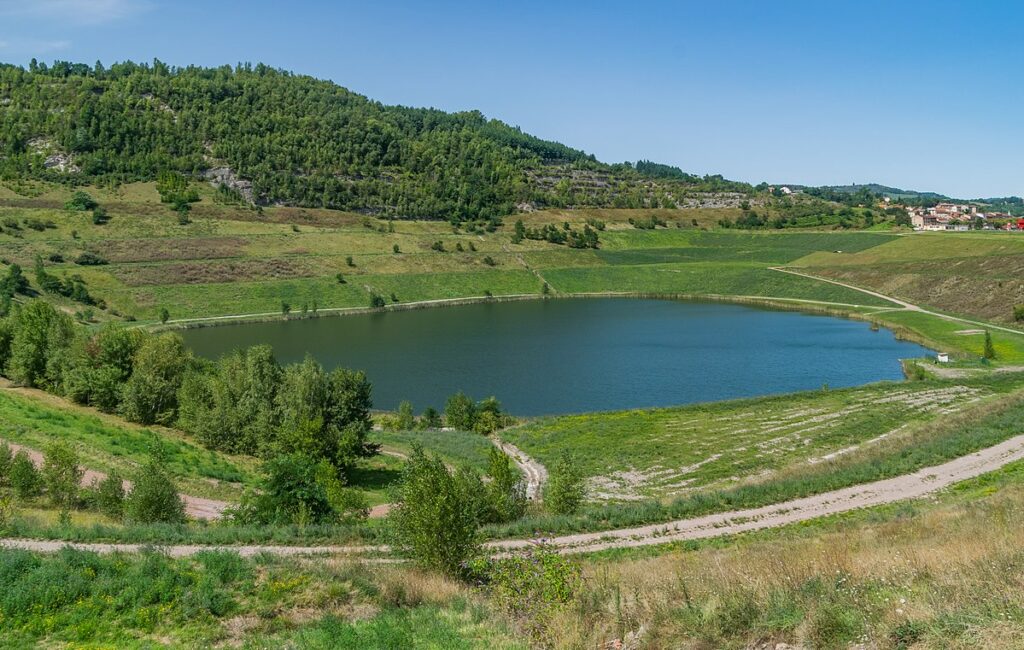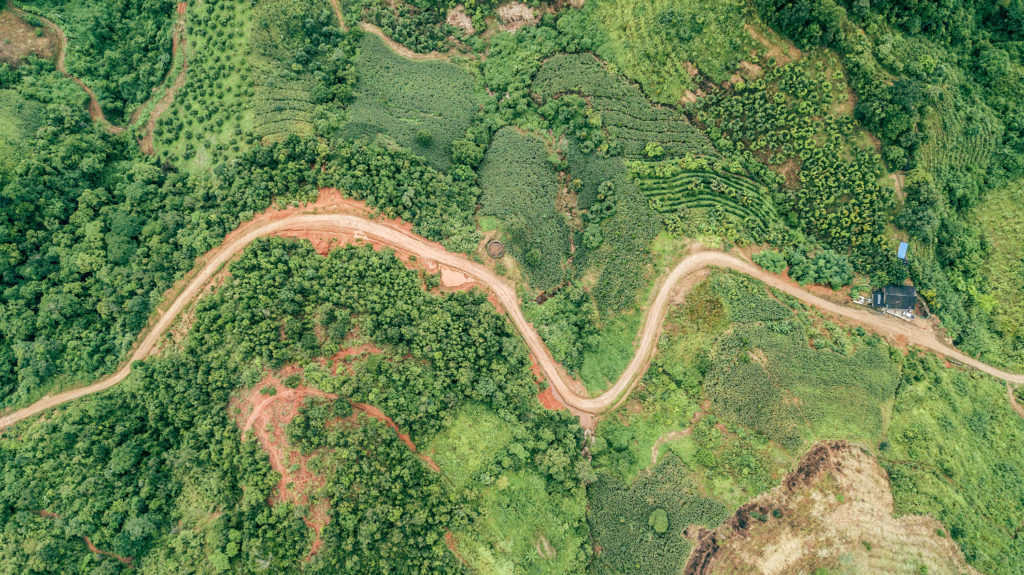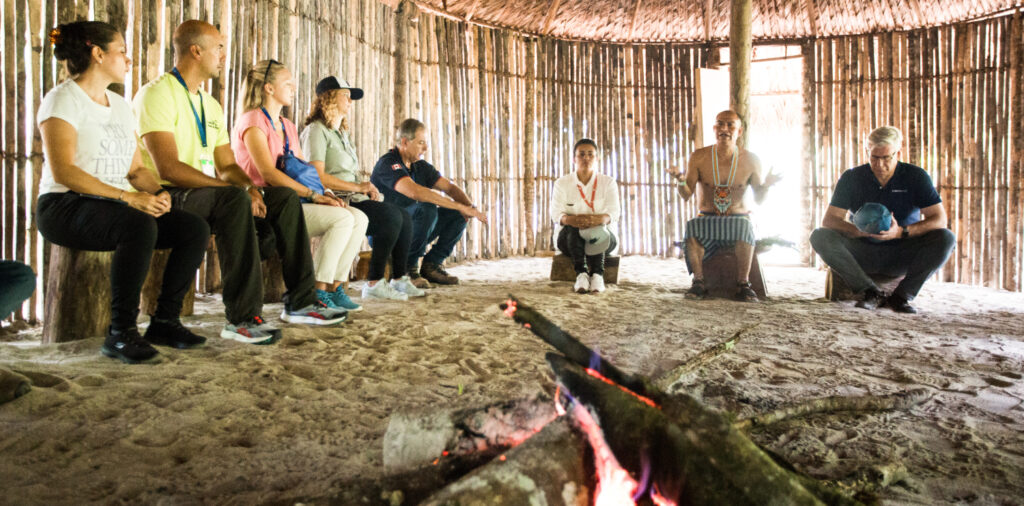With research by Francisco Olivera Whyte, Sustainability Sr. Advisor
Image: Australian Earth Science Education, Rehabilitation of the former mine La Découverte in Aveyron France (2017)
The concept of the circular economy is a transformative approach to address resource depletion, environmental degradation, and escalating waste generation.
The circular economy and mining share a symbiotic relationship that is crucial for sustainable development. At its core, the circular economy emphasizes reducing waste, reusing products, and recycling materials to create a closed-loop system. As providers of the critical minerals required for key technologies driving the new economy, the mining industry is well-positioned to adopt circular strategies.
Mining has a strong history of practices that support sustainable development, such as waste and water recycling, operational excellence programs, and the adoption of renewable energy; however, the opportunity around circular economy relates to not just managing resource scarcity, but creating value. To this end, miners are, for example, increasingly exploring ways to capture value from tailings through reprocessing or new product streams.
The luxury jeweller Mejuri has created an initiative to produce fine jewelry using refined material, showing a growing value-creation opportunity from circular approaches. By integrating principles of the circular economy, mining not only enhances its environmental footprint and creates new streams of value, but also supports a more resilient and sustainable global economy.
CURRENT CHALLENGES
The World Bank estimates that global waste production will increase by 70% by 2050, compared to 2016 – equivalent to a staggering 3.4 billion tonnes of waste annually. This projection underscores the impending strain on global waste management systems, which are currently inadequate or absent in many countries. The primary drivers of this surge include:
- Exponential population increase: The rise in population directly correlates with increased waste generation.
- Economic development: Advancements in economic development lead to improved living standards, increased consumption, and subsequently, heightened waste production.
- Urbanization and lifestyle changes: Rapid urban development fosters a consumer-driven culture, with single-use items and disposable goods becoming more prevalent.
- Technological advancements: While technological progress offers numerous benefits, it also contributes to heightened waste generation. The prevalence of electronic devices with short lifespans and rapid obsolescence significantly contributes to electronic waste.
In response to these challenges, circular economy practices in mining play a pivotal role in reshaping the extraction, processing, and utilization of natural resources. Some direct benefits include:
- Waste reduction: Enhanced efficiency directly leads to waste reduction.
- Resource conservation and efficiency: Minimizing waste by extending the lifespan of resources contributes to efficient resource use.
- Climate change mitigation: The circular economy is both a beneficiary and a major contributor to meaningful climate action.
- Biodiversity conservation: By reducing the need for resources and emitting fewer pollutants, the circular economy lessens stress on biodiversity.
- Technological innovation: The circular economy stimulates research, innovation, business creation, employment, and the generation of green wealth.
HOW WE GET THERE
Implementing circular economy initiatives is a complex task that requires multidisciplinary teams. These teams should encompass individuals with expertise in environmental science, economics, engineering, supply chain management, stakeholder engagement, among others. The collaboration of diverse skill sets is crucial in navigating the intricate web of challenges associated with transitioning from a linear to a circular model.
Moreover, the success of circular economy initiatives hinges on effective communication and collaboration not only within organizations but also across sectors. Stakeholder engagement is paramount, involving cooperation with governments, businesses, communities, and non-governmental organizations. Creating a shared vision for a circular economy and garnering support at various levels of society is integral to overcoming resistance to change and fostering a collective commitment to sustainable practices.
To facilitate the implementation process, organizations can leverage technological advancements, such as data analytics and supply chain management systems, to optimize material flows and identify opportunities for circular interventions. Embracing innovative technologies, such as artificial intelligence for predictive maintenance, can enhance the efficiency and effectiveness of circular economy initiatives.
Continuous monitoring and evaluation are essential components of successful circular economy implementation. Regular assessments of the environmental, economic, and social impacts of adopted strategies allow for adjustments and improvements over time. This iterative approach ensures that organizations remain adaptive to evolving challenges and capitalize on emerging opportunities in the circular economy landscape.
The following are key steps that organizations can take to begin developing and executing a circular economy strategy:
- Establish a circular economy working group: Comprising all necessary departments.
- Conduct material flow measurements: Understand available opportunities through detailed assessments of material flows in and out of the organization.
- Define a strategy: Assess and select potential target material flows based on volume, quality, cost, or other criteria.
- Analyze options: Explore on-site opportunities (e.g., anaerobic digesters), supply chain opportunities (e.g., joint projects with suppliers), and community opportunities through development programs.
- Execution: Implement the chosen strategies.
- Measure and review: Evaluate results, review progress, and communicate outcomes.
A SUSTAINABLE FUTURE
Embracing the circular economy is not merely a choice; it is a necessity for the sustainable future of resource development. Professionals in this field can contribute to a more resilient and environmentally friendly industry by incorporating circular principles. To deepen their understanding, professionals can explore resources such as academic publications, industry reports, and platforms like the Ellen MacArthur Foundation’s Circular Economy Learning Hub. The transition to a circular economy requires collective effort, and professionals can lead the way toward a more sustainable and regenerative future.



